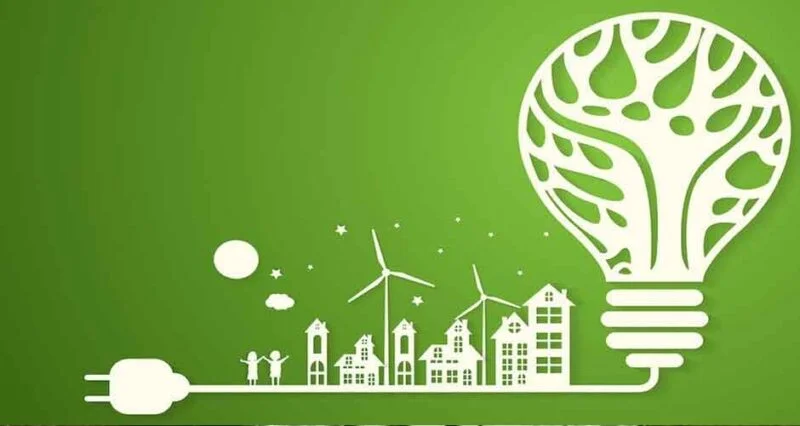
In today’s fast-paced business environment, optimizing efficiency is crucial for success. One often overlooked aspect of efficiency is energy management. By effectively managing energy consumption in the workplace, businesses can not only reduce their environmental impact but also improve their bottom line. In this article, we will explore energy management tips that can help optimize efficiency in the workplace. Additionally, we will discuss the role of business energy comparison here in making informed decisions regarding energy providers.
The Importance of Energy Management
Environmental Impact
Excessive energy consumption contributes to environmental degradation and climate change. By adopting energy management practices, businesses can reduce their carbon footprint and contribute to a more sustainable future.
Cost Reduction
Energy costs represent a significant expense for businesses. By implementing energy management strategies, companies can identify and eliminate energy wastage, resulting in substantial cost savings over time.
Employee Productivity
A well-managed workplace environment with optimal lighting, temperature, and equipment performance can positively impact employee productivity and satisfaction. Efficient energy management ensures a comfortable and conducive work atmosphere.
Energy Management Tips for the Workplace
Conduct an Energy Audit
Start by conducting a comprehensive energy audit to identify areas of energy inefficiency. An energy audit involves assessing energy usage patterns, equipment efficiency, insulation, and lighting systems. This information will serve as a baseline for energy-saving initiatives.
Upgrade to Energy-Efficient Equipment
Replace outdated and energy-intensive equipment with energy-efficient alternatives. Look for appliances with ENERGY STAR® certification, as they meet stringent energy efficiency standards. Upgrading to LED lighting and utilizing smart power strips can also contribute to energy savings.
Implement Lighting Controls
Lighting accounts for a significant portion of energy consumption. Install occupancy sensors and daylight harvesting systems to optimize lighting usage. These systems automatically adjust lighting levels based on occupancy and natural light availability, reducing unnecessary energy consumption.
Optimize HVAC Systems
Heating, ventilation, and air conditioning (HVAC) systems are major energy consumers. Set thermostats to optimal temperature ranges and regularly maintain and clean HVAC equipment to ensure efficient operation. Zoning systems can be implemented to control temperature in different areas based on occupancy and requirements.
Promote Energy Awareness and Employee Engagement
Raise awareness among employees about the importance of energy conservation. Encourage them to turn off lights, unplug electronics, and utilize power-saving features on devices. Employee engagement programs, such as energy-saving competitions or rewards for energy-conscious behavior, can foster a culture of energy efficiency.
The Role of Business Energy Comparison
Understanding Energy Tariffs
Finding the Right Supplier
Business energy comparison platforms allow companies to evaluate multiple suppliers based on their offerings and customer reviews. By comparing prices, contract terms, renewable energy options, and customer service reputations, businesses can choose a supplier that aligns with their energy goals and budget.
Switching Suppliers
Once a suitable energy supplier has been identified, businesses can initiate the switching process. Business energy comparison platforms often provide guidance and support during the switch. It is important to ensure a smooth transition to avoid any disruption to energy supply.
Employee Engagement and Training
Energy Conservation Training
Organize training sessions to educate employees about energy-saving practices and the benefits of energy management. Provide them with practical tips on how they can contribute to energy efficiency in their daily work routines.
Employee Incentives
Implement incentives and recognition programs to motivate employees to actively participate in energy-saving initiatives. Offer rewards or bonuses to individuals or teams that consistently demonstrate energy-conscious behavior and contribute to overall efficiency improvements.
Monitoring and Measurement
Real-Time Energy Monitoring
Install energy monitoring systems to track energy consumption in real-time. These systems provide visibility into energy usage patterns, allowing businesses to identify areas of high consumption and implement targeted energy-saving strategies.
Regular Energy Performance Assessment
Conduct periodic energy performance assessments to evaluate the effectiveness of energy management initiatives. Compare current energy usage data with historical records to determine progress and identify areas that require further improvement.
Long-Term Energy Planning and Renewable Integration
Setting Energy Efficiency Goals
Establish long-term energy efficiency goals for the organization. These goals can include targets for reducing energy consumption, increasing the use of renewable energy sources, or achieving specific certifications such as LEED (Leadership in Energy and Environmental Design). Clear goals provide a roadmap for continuous improvement and guide decision-making processes.
Renewable Energy Integration
Explore opportunities to incorporate renewable energy sources into the workplace. Install solar panels or consider purchasing renewable energy from utility providers. Renewable energy not only reduces reliance on fossil fuels but can also provide cost savings over time through net metering and government incentives.
Energy Storage Solutions
Investigate energy storage technologies such as batteries to store excess energy generated from renewable sources. Energy storage systems can help businesses optimize energy usage, reduce peak demand charges, and provide backup power during outages. They also enhance the overall resilience of the energy infrastructure.
Collaborate with Energy Experts
Engage with energy consultants or sustainability professionals to gain expert guidance and support in developing and implementing long-term energy plans. These experts can conduct energy assessments, provide insights on industry best practices, and assist in identifying innovative solutions to improve energy efficiency.
Track and Communicate Progress
Regularly monitor and evaluate the progress made towards energy management goals. Share updates and achievements with employees, stakeholders, and customers to highlight the organization’s commitment to sustainable practices. Transparent communication fosters a sense of collective responsibility and encourages further engagement.
Conclusion
Efficient energy management in the workplace requires a comprehensive approach that encompasses energy audits, equipment upgrades, employee engagement, business energy comparison, monitoring, and long-term planning. By implementing energy-saving measures, businesses can reduce costs, enhance productivity, and minimize their environmental impact. Business energy comparison platforms play a vital role in helping organizations find the most suitable energy supplier, considering factors such as price, contract terms, and renewable energy options. By integrating renewable energy sources and setting long-term goals, businesses can further advance their energy management practices and contribute to a greener and more sustainable future. Prioritizing energy efficiency is not only beneficial for the bottom line but also for creating a positive impact on the planet and society as a whole.

